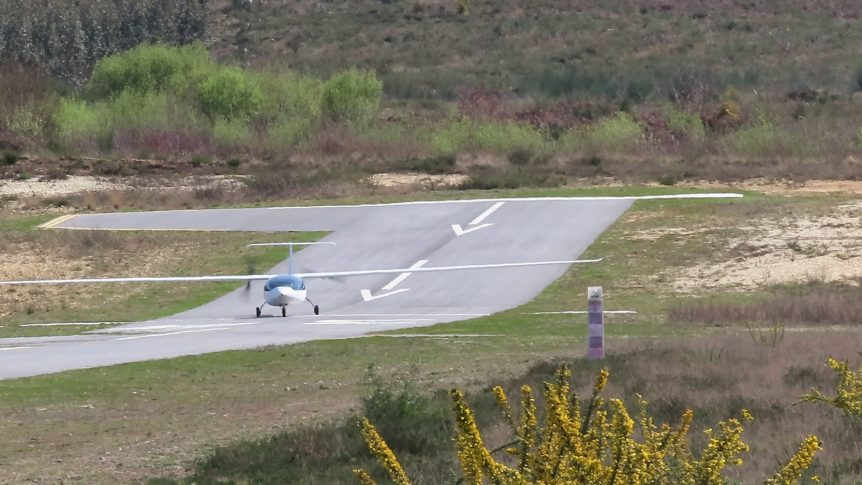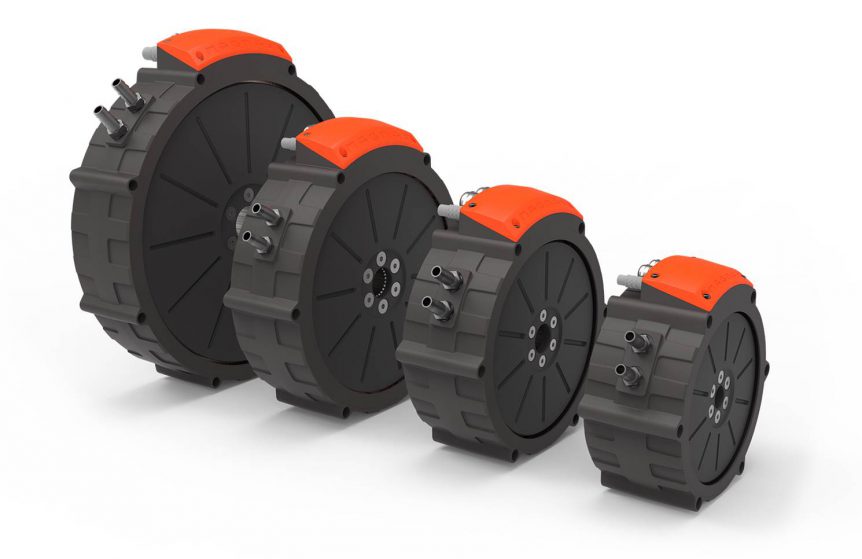Teofilo Leite introduced his Crossover, a touring motorglider powered by two Emrax motors, several years ago. This video from six years ago shows how it was configured then. Crossover has gone through several changes in its mode of propulsion since then and has become the svelte form that expresses a need to fly. In its original configuration, Crossover’s flaps, landing gear and motors extended and retracted, a neat bit of packaging in the slender fuselage. The airplane went through several changes, including one variant, shown at Aero 2014, that had a Rotax engine driving a long carbon-fiber shaft that drove a series of belts to a tail-mounted propeller. On the other side, a hybrid version with Rotax engine driving a generator charged the electric motor on the tail. It was a stunning display. Under its beautiful canopy, which opens via Bluetooth command, the low-slung seating is accessible even from a wheelchair. Carbon molded bucket seats “are shaped for long journeys …
Magnax Motor Claim Impressive Power-to-Weight Ratios
Echoing, in this editor’s mind, the collaboration between Oxford University and YASA motors, a recently announced motor from Belgium’s Ghent University and Magnax, makers of what they term an “axial flux machine.” Similar to YASA’s products, the motors are yokeless, which the makers claim promotes lower weight and the shortest possible flux path. Beyond this feature, the motor/generators offer “A patented system for cooling the windings, for the lowest possible stator temperatures.” According to Magnax, their Dual permanent magnet rotors give “the highest possible torque-to-weight ratio.” Rectangular section copper wire fills more area than round wire and concentrated windings allow “the lowest possible copper losses (no coil overhangs).” Grain-oriented electric steel lowers “core losses by as much as 85-percent.” The company’s white paper gives graphic and written explanations as to why these factors enable the Magnax motors to achieve 96-percent efficiency. While the company compares their motors to large, stationary industrial motors which apply radial flux to their operation, it might be …
Vahana Flies! Another Competitor in the Sky Taxi Airspace
Zach Lovering, Project Executive for Airbus subsidiary A3 reports, “Today marks a historic day for Airbus, A³, and the Vahana team. We can now announce our successful first flight. At 8:52AM on January 31, 2018 in Pendleton, Oregon, our full-scale aircraft, dubbed Alpha One, reached a height of 5 meters (16 feet) before descending safely. Its first flight, with a duration of 53 seconds, was fully self-piloted and the vehicle completed a second flight the following day. In attendance was the full Vahana team, representatives from the FAA, and A³ leadership, all coming together to witness this historic accomplishment.” Hovering Autonomously With canards built in Portland, Oregon at Flighthouse Engineering LLC, the tandem-winged, eight-rotor, 745 kilogram (1,642 pound) machine has a wingspan, or width, of 6.2 meters (20.3 feet), a length of 5.7 meters (18.7 feet) and a height of 2.8 meters (9.2 feet). Vahana is one of two Airbus VTOL urban transport options, the Pop.Up design combining ground and …
Siemens Makes a Big, Light Motor
Its 14 kilogram (30.8 pound), 85 kilowatt (114 horsepower) motor already graces the nose of the PIpistrel WattsUp, and Siemens seems to have expanded its aeronautical offerings with its new 50 kilogram (110 pound), 260 kilowatt (348.5 hp.) unit. According to Dr. Frank Anton, Head of eAircraft at Siemens Corporate Technology, the new motor “make[s] it possible to build series hybrid-electric aircraft with four or more seats.” Siemens claims a world record of five kilowatts per kilogram, although Roman Susnik, with his Emrax motors pulling close to 10 kilowatts per kilogram, might contest that, and LaunchPoint is working toward eclipsing that mark. To be fair, it’s certainly a giant boost over the power-to-weight ratio of most industrial-type electric motors, which Siemens also produces in large numbers. The company, according to its press release, intends to start flight testing the new motor before the end of this year, and hopes to increase output even more. In 2013, Siemens partnered with Airbus …



